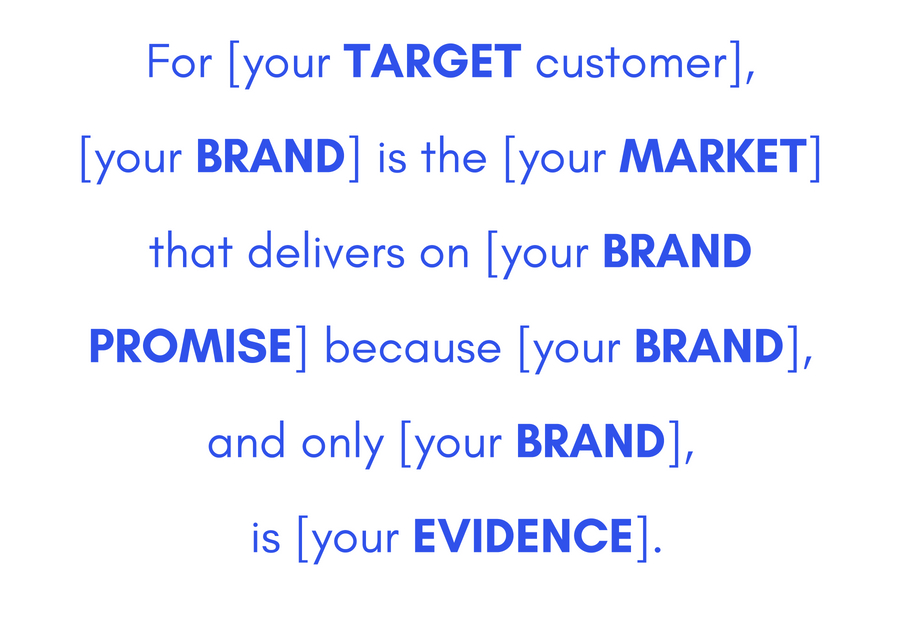“Positioning the brand and regaining trust are all smart things for us to do and those are the litmus tests for any decisions we make.”
John McKinley
In essence, this position feeds the reasons customer choose to do business with you and is the basis of relationship building with your customers. Having a strong positioning statement also allows a company to focus. Once a positioning statement is solidified, messaging, marketing and talk tracks can be developed to resonate with the target customer and motivate them to purchase. Maintaining awareness of your position in a fast-evolving marketplace is ongoing and necessary. Tracking attitude, awareness and usage of your position strengths may require new emphasis.
Best practice recommends breaking this into four key components:
1. Define the Market: What is your market category based on your product/service and offering? And, how does your brand relate to your target customer, in comparison to the competition?
2. Define the Target Customer: Describe the attitudinal and demographic characteristics of your target market. What are their pain points?
3.Define the Brand Promise: Reflecting on pain points, and customer indulgences, ask yourself how your brand solves for these problems? In the eyes of the target customer, what are the greatest benefits your brand offers? How do you delight them?
4.Define the Reason to Believe: What irrefutable evidence can you offer to demonstrate that your brand delivers on its promise?
After compilation of the above, it’s time to develop your positioning statement in a somewhat mad-lib kinda way by filling in the following:
For [your target customer], [your brand] is the [your market] that delivers on [your brand promise] because [your brand], and only [your brand], is [your evidence].
Consider Walt Disney World’s Brand Positioning statement as an example: For the young and young-at-heart, Walt Disney World is the theme park that best delivers on an immersive and magical experience because Walt Disney World, and only Walt Disney World, connects you to the characters and worlds you most desire.
After the qualitative and quantitative research is conducted to inform the reality and possibilities platform, Marketing Workshop works with clients in our established Brand Positioning Workshop to assist in the development of a uniquely-yours brand positioning statement.
Following the workshop, the extracted insights and conclusions are compiled into a brand framework which encompasses the statement itself, the suggested roll-out and timing (which is generally a phased approach based on a number of factors – company size, culture, geography, etc.). This framework provides all of the necessary information not only to capitalize upon the brand positioning statement but to also implement cross-functionality; both internally and across various customer touchpoints. This is potentially the most rewarding part of the brand positioning journey as the research – from qualitative to quantitative to the workshop itself, all feed into this final deliverable – which is specific, action-oriented and incredibly meaningful to the brand under study. This is how Marketing Workshop becomes part of the brand legacy; even if it is behind the scenes!
A well-executed brand positioning strategy results is a sustaining narrative; a story which evolves as the brand and marketplace evolve. Regardless of the marketing strategy; the underlying positioning of a brand should constantly resonate. One of the reasons we enjoy brand positioning is the opportunity not to only engage with brands in an incredibly meaningful way but to actually become part of their legacy; even if it is behind the scenes!
Whether a new or legacy brand, we would welcome the opportunity to partner with you in the quest for understanding, tweaking and/or embracing brand positioning. Contact us to learn more about how Marketing Workshop can assist.
~ Marketing Workshop
